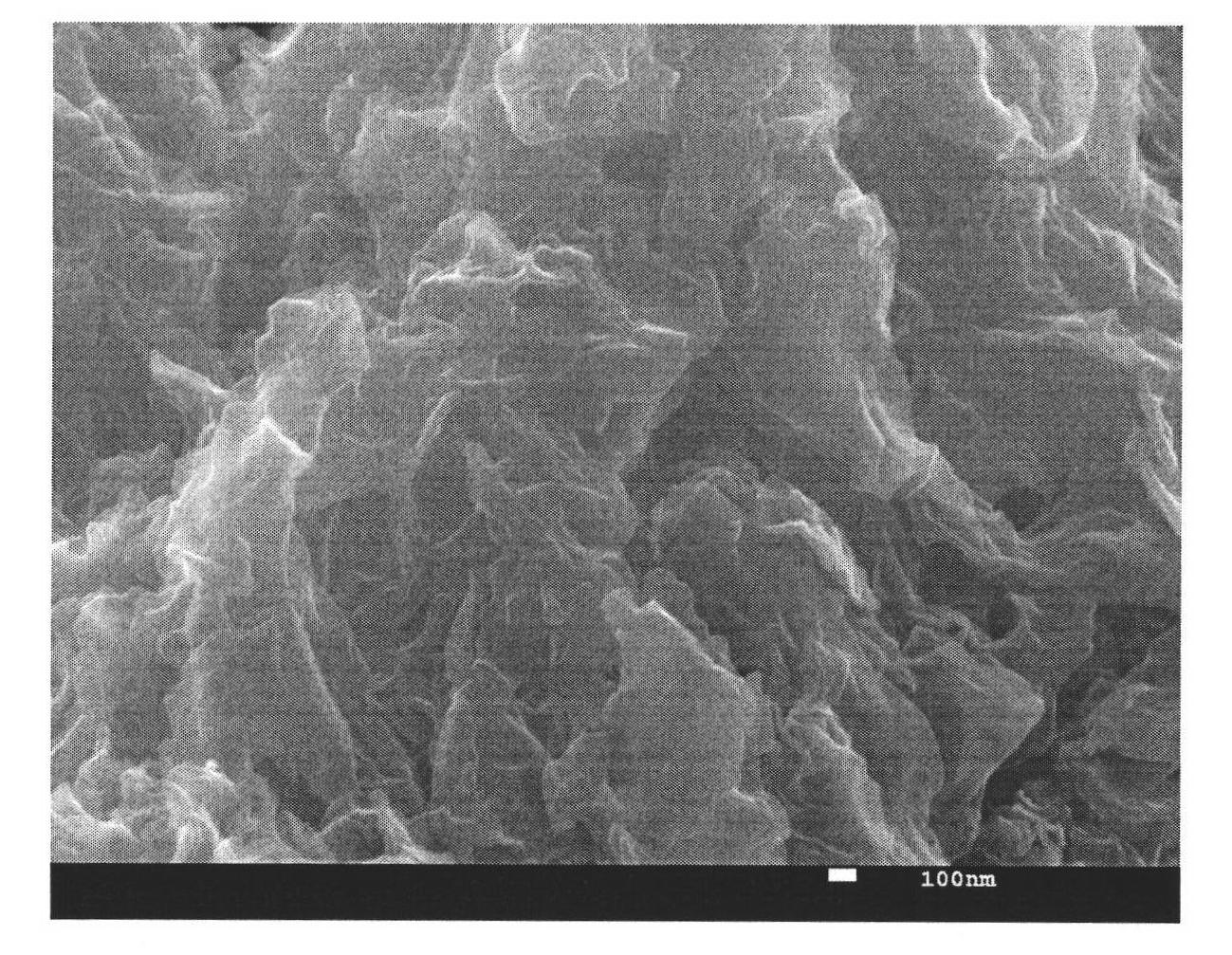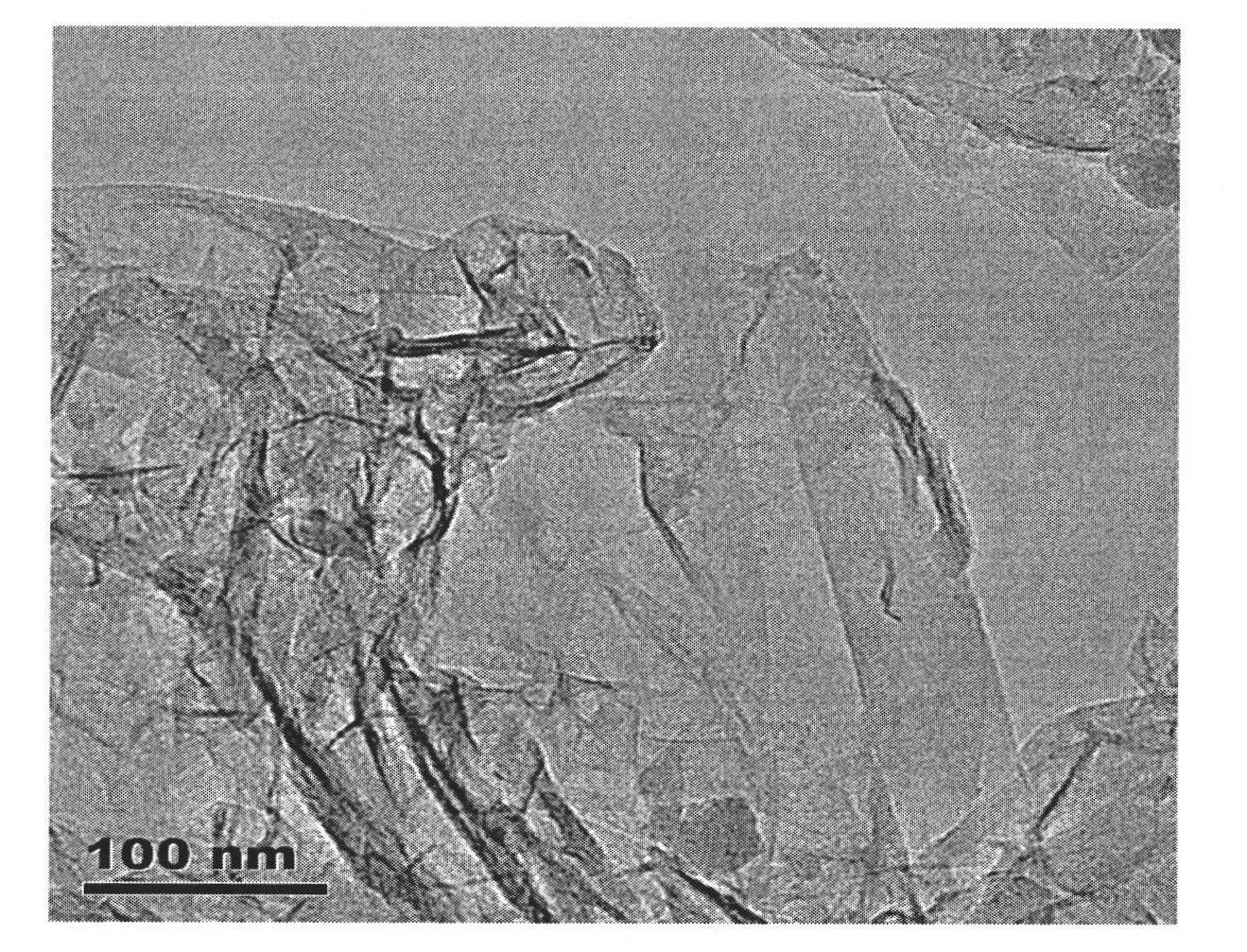Graphene/titanium dioxide lithium ion battery cathode material and preparation method
A lithium-ion battery and titanium dioxide technology, applied in battery electrodes, non-aqueous electrolyte battery electrodes, circuits, etc., to achieve the effects of improving electronic conductivity, improving cycle stability, and simple preparation process
- Summary
- Abstract
- Description
- Claims
- Application Information
AI Technical Summary
Problems solved by technology
Method used
Image
Examples
Embodiment 1
[0029] Embodiment 1: Lithium-ion battery negative electrode material graphene / titanium dioxide composite material I
[0030] Cool concentrated sulfuric acid to 0°C, then add graphite and sodium nitrate, stir until uniform, gradually and continuously add potassium permanganate, stir for 3 hours, raise the temperature to 35°C, continue stirring for 0.5h, then gradually and continuously add deionized water, the temperature rose to 98°C, reacted at this temperature for 15 minutes, moved to room temperature, added 5% hydrogen peroxide, stirred for 1 hour, then added 1M hydrochloric acid and mixed and stirred, and the obtained product was washed with deionized water until it was neutral, and the oxidized graphite. Graphite oxide was dispersed in deionized water at a concentration of 0.5 mg / mL, and ultrasonically exfoliated to obtain graphene oxide. Graphene oxide was reduced by hydrazine at 100°C for 24 hours, and the obtained product was washed with deionized water until neutral t...
Embodiment 2
[0031] Embodiment 2: Lithium-ion battery negative electrode material graphene / titanium dioxide composite material II
[0032]The graphene oxide material was prepared as described in Example 1. Graphene oxide and titanium tetrachloride were uniformly mixed in a mass ratio of 1:10, then hydrolyzed at 60°C for 3 hours, and the product was washed and filtered to obtain oxidized Graphene and titanium dioxide composites. The prepared composite material was dispersed in a hydrazine solution, and kept at a temperature of 100° C. for 24 hours, the product was washed to neutrality, and finally the graphene / titanium dioxide composite material II was obtained. The electrode material test conditions are as described in Example 1, with a current density of 50mA / g charging and discharging, the first discharge capacity can reach 350mAh / g, and the capacity after 50 cycles is also 280mAh / g.
Embodiment 3
[0033] Embodiment 3: Lithium-ion battery negative electrode material graphene / titanium dioxide composite material III
[0034] The graphene oxide material was prepared as described in Example 1. Graphene oxide and titanium tetrachloride were uniformly mixed in a mass ratio of 1:20, then hydrolyzed at 60°C for 3 hours, and the product was washed and filtered to obtain oxidized Graphene and titanium dioxide composites. The prepared composite material was dispersed in a hydrazine solution, and kept at a temperature of 100° C. for 24 hours, the product was washed to neutrality, and finally the graphene / titanium dioxide composite material III was obtained. The transmission electron microscope photograph of the electrode material is as follows: Figure 6 shown. The electrode material test conditions are as described in Example 1, with the current density of 50mA / g charging and discharging, the first discharge capacity can reach 320mAh / g, and the capacity after 50 cycles is also 25...
PUM
 Login to View More
Login to View More Abstract
Description
Claims
Application Information
 Login to View More
Login to View More - R&D
- Intellectual Property
- Life Sciences
- Materials
- Tech Scout
- Unparalleled Data Quality
- Higher Quality Content
- 60% Fewer Hallucinations
Browse by: Latest US Patents, China's latest patents, Technical Efficacy Thesaurus, Application Domain, Technology Topic, Popular Technical Reports.
© 2025 PatSnap. All rights reserved.Legal|Privacy policy|Modern Slavery Act Transparency Statement|Sitemap|About US| Contact US: help@patsnap.com



